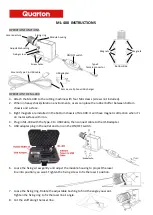
Doc. code 1080100090
Version: 2015_03_03
9
EN 13757-1_2002, -2_2004, -3_2004 Communication systems for meters and remote reading of meters
The M-Bus
A Documentation, Version 4.8, M-Bus User group
TI Technical Journal
Texas Instruments Technical Journal Vol. 8, 1991 M-Bus
9.3.2
Additional technical specifications
The installation has to fulfil the requirements of the relevant norms, standards and literature (see paragraph
9.3.1) and the specifications as follows:
Maximum voltage M-Bus
42 V
Minimum voltage M-Bus
24 V
Maximum ripple voltage
200 mV; EN 13757-2_2004; 4.3.3.6
Maximum voltage potential
differences
2 V
9.3.3
Technical data M-Bus
Primary address
0 (factory setting); 1 – 250 (configurable)
Baud rate
2400; 300 (configurable)
Connecting cable length
1 m
9.3.4
Number of read-outs
The number of possible read-outs (2400 Bd) depends on the number of devices in the M-Bus network.
Number of devices in the network Read-outs per day primary address Read-outs per day secondary address
(without using SND
NKE)
3
655
275
20
485
170
60
300
90
120
190
52
250
105
27
Values for standard baud rate 2400 Bd.
If fewer read-outs are carried out, the unused ‚credit’ is stored in the instrument and can be used later.
During M-Bus communication with an end instrument the other interfaces (push-button, optical interface) of this
instrument cannot be used.
9.4
Radio interface wireless M-Bus EN 13757-3, -4 (optional)
The radio interface is for the transmission of meter data (absolute values).
General information about the radio interface
Installation of radio components between or behind heating pipes, or the presence of other bulky obstacles
directly over or in front of the housing must be avoided.
The transmission quality (range, telegram processing) of radio components can be negatively influenced by
instruments or equipment with electromagnetic emissions, such as telephones (particularly LTE mobile radio
standard), Wi-Fi routers, baby monitors, remote control units, electric motors, etc.
In addition, the construction of the building has a strong influence on the transmission range and coverage.
Furthermore, when using installation boxes (substations) they must be equipped with non-metallic covers or
doors.
The factory-setting of the clock in the meter is standard (winter) Central European Time (GMT +1). There is no
automatic changeover to daylight savings (summer) time.
The radio function is not activated upon delivery (factory-setting). See section ‘Activation of the radio
interface’.
































